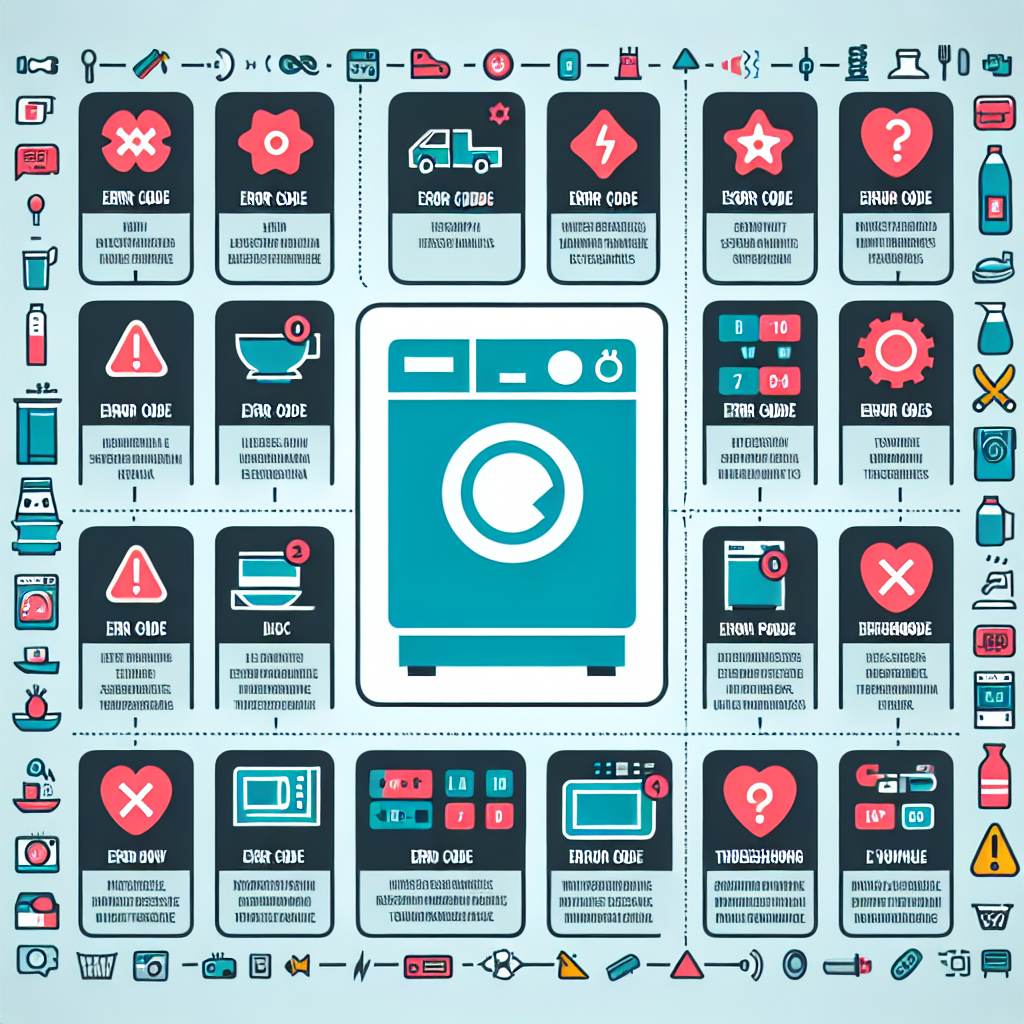
<p>
</p><h1>Understanding Samsung Dishwasher Error Codes: A Comprehensive Guide to Troubleshooting</h1><p>
## Introduction
Dishwashers are invaluable appliances in modern kitchens, offering time-saving solutions for cleaning dishes. However, when they break down, it can be a huge inconvenience. Samsung dishwashers are known for their reliability, but like any appliance, they can encounter issues that lead to error codes.
This comprehensive guide aims to demystify Samsung dishwasher error codes, enabling you to troubleshoot common problems effectively. With the right information, you can resolve many issues without needing a technician, saving you both time and money. Whether you’re experiencing a leak, a failure to start, or other problems, understanding these codes will help you get your dishwasher running smoothly again.
### Part 1: Overview of Samsung Dishwasher Error Codes
Samsung dishwashers display error codes to notify users of specific issues. Recognizing these codes is the first step in troubleshooting. Typical error codes include:
1. **Error Code 1E** – Water inlet problem.
2. **Error Code 2E** – Drainage issue.
3. **Error Code 3E** – Motor problem.
4. **Error Code 4C** – Water supply malfunction.
5. **Error Code 5E** – Drain error.
6. **Error Code 6E** – Heating error.
7. **Error Code 7E** – Door switch issue.
8. **Error Code 8E** – Overflow error.
9. **Error Code 9E** – Internal fault.
Understanding each error code will guide the troubleshooting process.
### Part 2: Detailed Trouble Codes and Solutions
#### 2.1 Error Code 1E – Water Inlet Problem
**Symptoms:** The dishwasher won’t fill with water.
**Troubleshooting Steps:**
– Check the water supply valve to ensure it is open.
– Inspect the water inlet hose for kinks or clogs.
– Test the inlet valve for malfunctioning or blockages.
– If necessary, replace the valve.
#### 2.2 Error Code 2E – Drainage Issue
**Symptoms:** Water remains in the bottom of the dishwasher.
**Troubleshooting Steps:**
– Check the drainage hose for clogs or kinks.
– Inspect the garbage disposal connected to ensure it isn’t clogged.
– Clear the filter and drain pump of debris to facilitate drainage.
#### 2.3 Error Code 3E – Motor Problem
**Symptoms:** The motor avoids running.
**Troubleshooting Steps:**
– Ensure that the machine is not overloaded.
– Listen for unusual sounds that may indicate motor stress.
– Consult with a professional if the motor requires replacement.
#### 2.4 Error Code 4C – Water Supply Malfunction
**Symptoms:** The dishwasher fails to start.
**Troubleshooting Steps:**
– Ensure that the water supply is stable and sufficient.
– Check for any active water supply issues.
#### 2.5 Error Code 5E – Drain Error
**Symptoms:** Error indicates a problem with draining.
**Troubleshooting Steps:**
– Follow the same steps outlined in Error Code 2E regarding drainage checks.
#### 2.6 Error Code 6E – Heating Error
**Symptoms:** The water isn’t heating up.
**Troubleshooting Steps:**
– Check the heating element for continuity.
– Ensure the thermostat is functioning correctly.
#### 2.7 Error Code 7E – Door Switch Issue
**Symptoms:** Dishwasher won’t operate because the door isn’t recognized as closed.
**Troubleshooting Steps:**
– Inspect the door latch for damage.
– Ensure the door switch functions properly.
#### 2.8 Error Code 8E – Overflow Error
**Symptoms:** Dishwasher leaks.
**Troubleshooting Steps:**
– Inspect the float switch for obstructions.
– Examine the door seal for wear.
#### 2.9 Error Code 9E – Internal Fault
**Symptoms:** A general malfunction warning; the machine stops working.
**Troubleshooting Steps:**
– Perform a reset of the appliance.
– If unresolved, professional repair may be necessary.
### Part 3: Preventive Maintenance Tips
To minimize the risk of encountering error codes, regular maintenance is crucial:
1. Clean filters regularly to prevent clogs.
2. Inspect and clean the spray arms to ensure proper water flow.
3. Conduct periodic checks of the water supply line.
4. Avoid overloading the dishwasher as it can lead to strain.
5. Use quality dishwasher detergents.
6. Perform a deep clean at least every few months.
### Part 4: When to Call a Professional
While many issues can be resolved at home, some require professional intervention. If you’ve followed the above steps and the Dishwasher isn’t functioning, it may be time to consult an expert. Here are situations that typically require professional help:
1. **Electrical Issues** – If you suspect a wiring problem or motor malfunction.
2. **Persistent Error Codes** – If the same codes keep reappearing despite troubleshooting.
3. **Mechanical Failures** – Issues related to the mechanical components that you cannot resolve.
### Conclusion
Understanding Samsung dishwasher error codes is essential for any homeowner. By familiarizing yourself with common issues and solutions, you can significantly reduce downtime and maintenance costs. Regular maintenance and quick recognition of potential problems will ensure your dishwasher serves you well for years to come. Remember, if you ever feel overwhelmed or the problem persists beyond your expertise, don’t hesitate to call a professional technician for assistance. Ensure to keep this guide handy for future reference!
### Additional Resources
– Samsung User Manual for troubleshooting.
– Online forums for Samsung dishwasher owners for community support.
– Local appliance repair services in your area.
When in doubt, always prioritize safety. Unplug the appliance before attempting any repairs or maintenance. Happy cleaning!
</p>
Schedule Appointment
